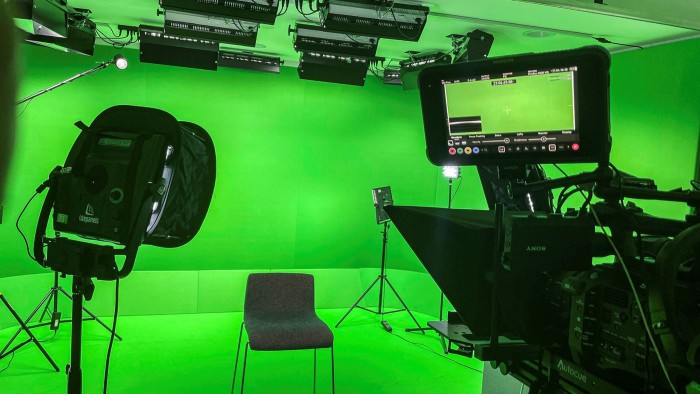Business schools look to AI and VR to enhance digital courses

Roula Khalaf, Editor of the FT, selects her favourite stories in this weekly newsletter.
Warwick Business School’s Distance Learning MBA started 36 years ago as a postal course — a mode of delivery that must seem positively quaint to any students born in that inaugural year of 1986.
Today’s learners access the course via a bespoke online platform which, Warwick says, enables them to “engage in lectures in real time . . . access teaching materials . . . participate in global study groups and speak directly to . . . lecturers [and] peers”.
As online MBA providers vie to attract students, all are becoming more inventive in the way they deliver content. Before long, technologies such as virtual reality and artificial intelligence may make current courses look as outdated as an envelope of study materials thudding on to a doormat.
Investment has been accelerated by the coronavirus pandemic, which forced business schools to teach even conventional MBA students remotely.
FT Online MBA ranking 2022 — 10 of the best

Find out which schools are in our ranking of Online MBA degrees. Take a look at our analysis and methodology. Also, read the rest of our coverage at www.ft.com/online-learning.
Warwick’s technology now includes green-screen video studios that allow presenters to be superimposed on different backgrounds. “We take some content from a member of faculty that’s a flat information-sharing process,” says Dot Powell, the school’s director of teaching and learning enhancement. “Around that, we’ll design activities, interactive features and encourage the students to engage with the content and with each other. We have social aspects to the technology so they can comment on things, work in groups virtually and engage with work simulations.”
Simply providing a set of slides and talking about them “won’t be acceptable for much longer”, she adds — students want to be able to interact. And, because flexibility is a key selling point of online MBAs, asynchronous content has to be engaging and readily accessible. Podcasts are proving popular, Powell says, because “you can listen to the content on the go”.
Some tried and tested elements of traditional MBA teaching are being successfully translated online.
Tom Adams, chair and co-founder of Washington DC-based Quantic School of Business and Technology — which provides an MBA and executive MBA online — highlights case studies and simulations that immerse students in the dilemmas that confront management teams.
Students using Quantic’s app are presented with scenarios in which they have to make decisions. As they make those decisions, they get tailored feedback that can reinforce best practice — or tell a learner “no, it’s not that, and why,” Adams says. “At the end, the way you know the material is not like how you felt after a video lecture.”
Still, Adams insists that pedagogy is paramount. “We don’t do tech for tech’s sake,” he says. What matters, he believes, is finding the best examples of real-life teaching and then asking “can it be delivered through a smartphone without dumbing it down?”
Betty Vandenbosch, chief content officer at online learning platform Coursera, which hosts MBAs from several business schools, studies learners to find out which teaching techniques work best. She argues that the concept of the “sage on stage” is outdated, and points to the iMBA offered by the Gies College of Business at the University of Illinois Urbana-Champaign: although it can have up to 4,000 students, they are still able to build connections with peers and faculty, and receive vital feedback.
She also cites the online MBA offered by Australia’s Macquarie University, which allows students to take the course in blocks that “stack up”, reducing the risk that they will feel overwhelmed. “The beauty of that is you have stop-off points if you need them,” she says.

Such courses will be enhanced, she thinks, by artificial intelligence systems that know when to “nudge” learners.
“Folks do best when they learn every day or every couple of days,” Vandenbosch says. “Nudges say: ‘Hey, maybe you should get back to it’.”
AI could also allow courses to be tailored to individual learners. Federico Frattini, dean of MIP, the Graduate School of Business of Politecnico di Milano, says the use of AI in MIP’s platform, Flex, can create “recommended learning pathways”. Flex was initially tested on alumni, but made available to students more broadly during the pandemic.
Frattini says MIP hopes to embed the AI into online MBAs, so that new students can receive recommendations on course options that will align with their career aspirations.
Schools are more cautious about virtual reality. Adams says VR could be “exciting” for business education as it can enhance experiential learning. But when, precisely, it is used will need to be carefully considered.
Both he and Frattini think its role may be to simulate real-life scenarios — a company dealing with a cyber attack, for example — so that the knowledge delivered through other teaching methods can be applied. But it may be less appropriate for formal classes, not least because of the challenge of taking notes.
Powell has further doubts about the practicalities. “It would obviously be a logistical nightmare to expect students round the world to have VR headsets,” she says, adding that Warwick is exploring a way of delivering an immersive video environment without such peripherals.
In any case, she adds, technology is only one of the factors that make for a good course. “It’s the tech, the team behind its creation, and the faculty.”
Comments